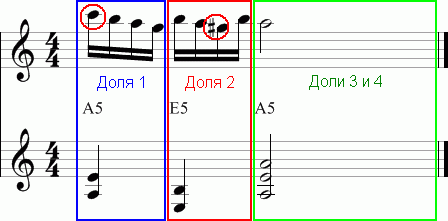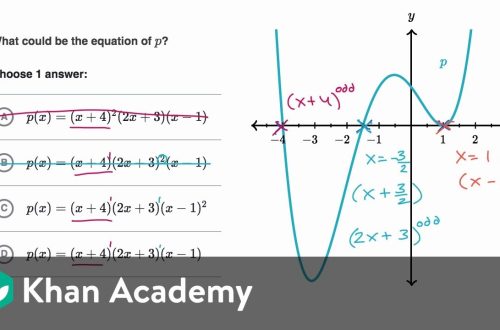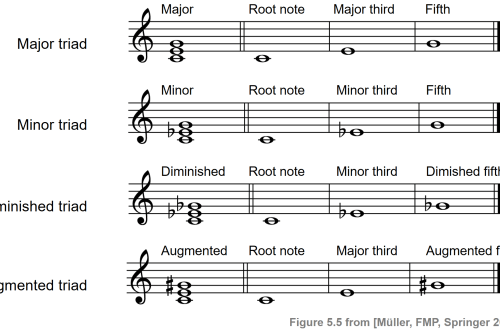
Power chords
Contents
What chords should rock fans know?
Power chords are quite common in rock music, and “heavy” music without them is simply unthinkable. It’s hard to find an electric guitar player who hasn’t tried power chords.
So, let’s look at what power chords are. First, listen to an audio example to make it clear what we are talking about:
Power Chord Example

Figure 1. Rhythm part of an audio example.
What is the third structure of chords
Most likely, you are familiar with major and minor triads, seventh chords (nonchords, etc.). When describing these chords, attention is always drawn to the fact that their sounds can be arranged in thirds. By thirds … This is an important point. The chords, the sounds of which can be arranged in thirds, are called chords of the third structure.
Power chord structure
A power chord can consist of two or three notes. In general, a chord is a combination of three or more sounds, and two notes do not constitute a chord. And despite this, a power chord may well consist of two notes. These two notes make up the fifth interval. To be more precise – a pure fifth (3.5 tones). Take a look at the picture:

Figure 2. Two note power chord.
The blue bracket indicates the interval of a pure fifth.
If the chord consists of three notes, then the third note is added on top so that an octave interval is formed between the extreme sounds:
Three note power chord:

Figure 3. Three note power chord.
The blue bracket indicates the interval of a pure fifth, and the red bracket indicates an octave.
Note that the power chord is not a 3rd structure chord, since its two notes cannot be arranged in 3rds:
- in the case of a chord of two notes, between sounds – a pure fifth;
- in the case of a chord of three notes, between the lower and middle sounds is a pure fifth, between the middle and upper sounds is a pure fourth, between the extreme sounds is an octave.
Power chord notation
The power chord is denoted by the number 5. This is due to the fact that the main interval that makes up the chord (fifth) is also denoted by the number 5. Examples of notation: G5, F#5, E5, etc. As with other chord notations, the letter before the number indicates the root of the chord.
Quite often, power chords are called “quintchords”. It is said that the performer plays “on fifths”. Again, the name follows from the interval formed.
power chord inclination
Remember the major and minor triads: an interval of a pure fifth is formed between the extreme sounds, and the middle sound divides the pure fifth into two thirds (large and small). It is the middle sound of the triad that sets the inclination: it is either major or minor. The power chord does not have this sound (you can say that the power chord is derived from a triad that had its middle sound removed), as a result of which the inclination of the chord is not defined. It is either guessed (implied) in the context of the work, or the missing note may be present in the part of another instrument. Both options are shown in the figure below:

Figure 4. Inclination of a power chord.
Look at the picture. The lower part (a la rhythm) contains power chords, the upper part contains solos. The first beat is circled in blue, the second beat in red, and the third and fourth beats in green.
First share. During the first beat, an A5 power chord is played, which consists of two notes: A and E. The top part (solo) contains the note C (circled in red). She will determine the inclination, because “complements» power chord to a minor triad (ACE). To be more precise, in this case, note C is a chord sound .
Second share. The E5 chord sounds here, which again does not determine the inclination. However, there is a G# note in the solo part (circled in red) which “complements» E5 chord to major triad (EG#-H). And in this case, G# is the chord sound.
Third and fourth beats. This is the end of our musical fragment. The rhythm part contains an A5 power chord, consisting of three notes that do not determine mood. The soloist takes one single note A, which in no way determines the mood. Here we are already “thinking out” the minor, since our ears have just heard A5 with a minor mood on the first beat.
If there is a need, in our dictionary you can see what ” Inclination ” is in more detail.
Power chord inversion
Since a power chord only consists of two (different) sounds, it has one invocation. When the lower sound is transferred an octave up, or the upper sound an octave down, an interval of a pure fourth is formed. This type of inverted chord is also used in rock music, but much less often than the uninverted type.
The figure below shows both ways to get the inversion of a power chord:

Figure 5. Power chord inversion, variant 1.
Option 1. An inversion obtained by moving the lower sound one octave up. The power chord is circled in blue, and its inverse is circled in red.

Figure 6. Power chord inversion, variant 2.
Option 2. An inversion obtained by transferring the upper sound one octave down. The power chord is circled in blue, and its inverse is circled in red.
The inversion of a power-chord (quint-chord) is quite often called a quarter -chord ( by the name of the resulting interval).
The reversal of a power chord follows the rules of reversal of intervals. You can learn more about them in the article ” Inverting intervals “.
Applying a Power Chord
Typically, quintchords are played on an electric guitar using additional sound processing devices: distortion or overdrive. As a result, the chord sounds rich, dense, powerful, assertive. The chord is well “read”, because. the perfect fifth (and the perfect fourth resulting from the inversion of the fifth chord) are consonant intervals (perfect consonance).
As part of our site, we touch upon the theory of music, so we will not dwell on the methods and nuances of playing quintchords in detail. We only note that usually these chords are taken on the “bass” strings (4th string, 5th string and 6th string), and the rest of the strings do not take part in the game. When playing a power chord, the strings are often slightly muffled with the palm of the right hand, which greatly changes the character of the sound.
Results
You have become familiar with popular power chords in rock music.





